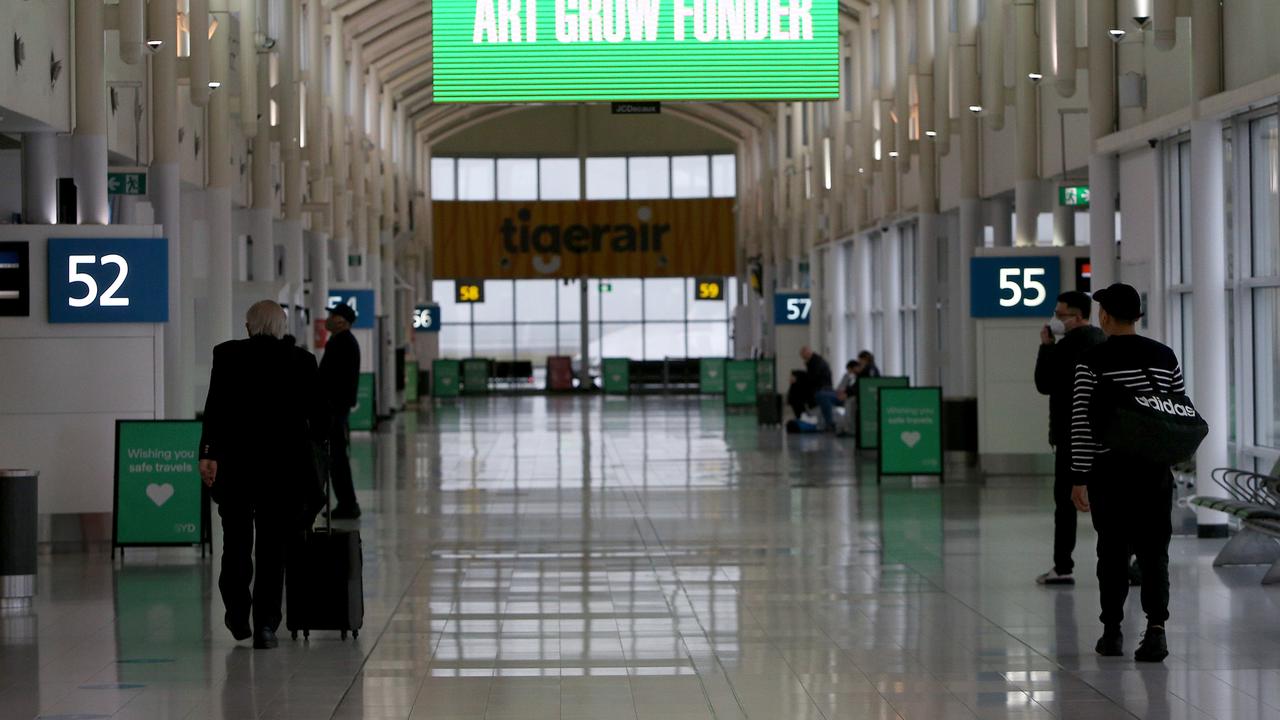Terry McCrann: Qantas chief gets $25m, owners get $7.5bn
I SINCERELY doubt that back in the dark days that ran on seemingly endlessly for our national carrier, that in their wildest dreams chairman Leigh Clifford or CEO Alan Joyce anticipated a Qantas share price of $5.72, writes Terry McCrann.

Terry McCrann
Don't miss out on the headlines from Terry McCrann. Followed categories will be added to My News.
I SINCERELY doubt that back in the dark days that ran on seemingly endlessly for our national carrier — from around 2012 and into 2015, when the share price struggled to hold around a single buck — that in their wildest dreams either chairman Leigh Clifford or (back then, ‘embattled’) CEO Alan Joyce anticipated a Qantas share price of $5.72.
QANTAS BOSS TAKES HOME $25 MILLION
Heck, that would take it back above even the $5.50 offered by private equity (and rejected) in the craziest of crazy days just before the GFC. And supposedly never to be seen again.
I think back then they’d have been more than happy to contemplate a share price around the $2.82 reached at the end of 2015-16.
That was the share price which delivered Joyce just over $6 million of shares via his long-term incentive payment and the biggest total pay cheque of his working life of $13 million.
Until this year. A share price of $5.72 is going to deliver him $18.6 million worth of shares under the long-term payment and a total pay packet of around $25 million, give or take the odd million paid under the short-term bonus.
Although unanticipated undoubtedly by both giver — chairman and the board — and recipient, you’d have to say it showed the remuneration structure working and working in both a reasonable and balanced way.
A $25 million pay cheque seems a big number and it is. It’ll be nearly five times what the CEO of what until very recently used to be Australia’s biggest company got, the luckless and leaving Ian Narev at CBA. Admittedly, in the context of very different ‘performance’.

Indeed Joyce’s pay cheque won’t be that far short of the pay cheques for all four bank CEOs combined this last year.
But you’d have to concede it’s very reasonable on the single most important metric: how Qantas shareholders have done not just under his watch, but specifically over the three-year time frame on which the $25 million is based.
Critically, it is the rise in the share price from $1.40 or so to $5.72 that is delivering Joyce $18.6 million, the overwhelming component of his cheque, instead of the $4.5 million or so base value of his LTIP when he was given the incentive.
Over that same time frame shareholders have been ‘given’ $7.5 billion and given it largely by Joyce and his management team and Qantas staff — and by chairman Clifford and his board.
Very often, CEOs manage to ride either broad industry trends or ‘lucky’ share market booms to multimillion-dollar pay cheques. This is not the case with Joyce at Qantas.
Yes, Qantas has ridden the combination of ever-rising both inboard and outward tourism and US shale-bequeathed low oil prices. And yes, it has exploited its dominant position in the market superbly.
But you can draw a direct line between Qantas exploiting that opportunity and the major strategic and operational decisions made by Joyce as CEO, executed by his management and Qantas staff, and obviously endorsed and supported by chairman and board.
They in a sense started with that shock decision one Saturday morning back in 2011 to ground the entire fleet. A decision that led to calls for Joyce’s head and which took some considerable resolution on the part of chairman Clifford to resist through the dark days that followed.
Right through Clifford backed his CEO and backed his strategic and operational decisions. Perhaps the key one was the relationship with Emirates that turned an international arm seemingly on death row into a money spinner and a key feeder into domestic domination.
That domestic market domination was built on Jetstar, where Joyce had first cut his teeth. As Joyce less than subtly noted at the annual result: Qantas domestic and Jetstar pocketed 90 per cent of the domestic profit ‘pool’ — otherwise known as monopoly power, effectively wielded.

CONDITIONS, CONFIDENCE AND CHINA
THE National Australia Bank business survey has thrown up a puzzling — and disturbing contradiction: business conditions are great, indeed they are at the highest level they’ve been since before the GFC nearly 10 years ago, but business confidence isn’t.
NAB chief economist Alan Oster has tried to unravel the puzzle and come up with three big factors.
Small and medium enterprises are concerned most about customer demand, pressure on margins and government policy.
Both energy costs (not surprisingly) and wages costs (perhaps a little surprisingly) are also damaging confidence.
As a consequence some 37 per cent of respondents who wanted to expand have shelved their plans, with an uncertain economy listed as the top factor.
Red tape is also crushing particularly these SMEs.
More than two thirds nominate it as a big negative, while nearly half feel overwhelmed by the difficulties of running a business, with tax complexity a further major factor.
What is especially damaging is the clear sign that government — both in Canberra or Melbourne — is not going to do anything to relieve these pressures. Indeed, they are both likely to make them worse.
There was some significantly positive news on Tuesday:
IN-bound tourism (the one that delivers dollars to local businesses) continues to grow very strongly.
The main reason is China. In the past year 1.3 million tourists arrived from China, up a thumping 11 per cent over the previous year. Tourists from China topped those from New Zealand for the first time in July.
China matters bigger time for us: mining, apartments and tourists.


